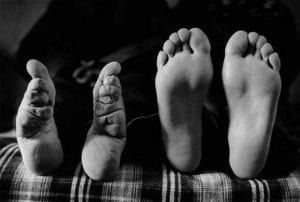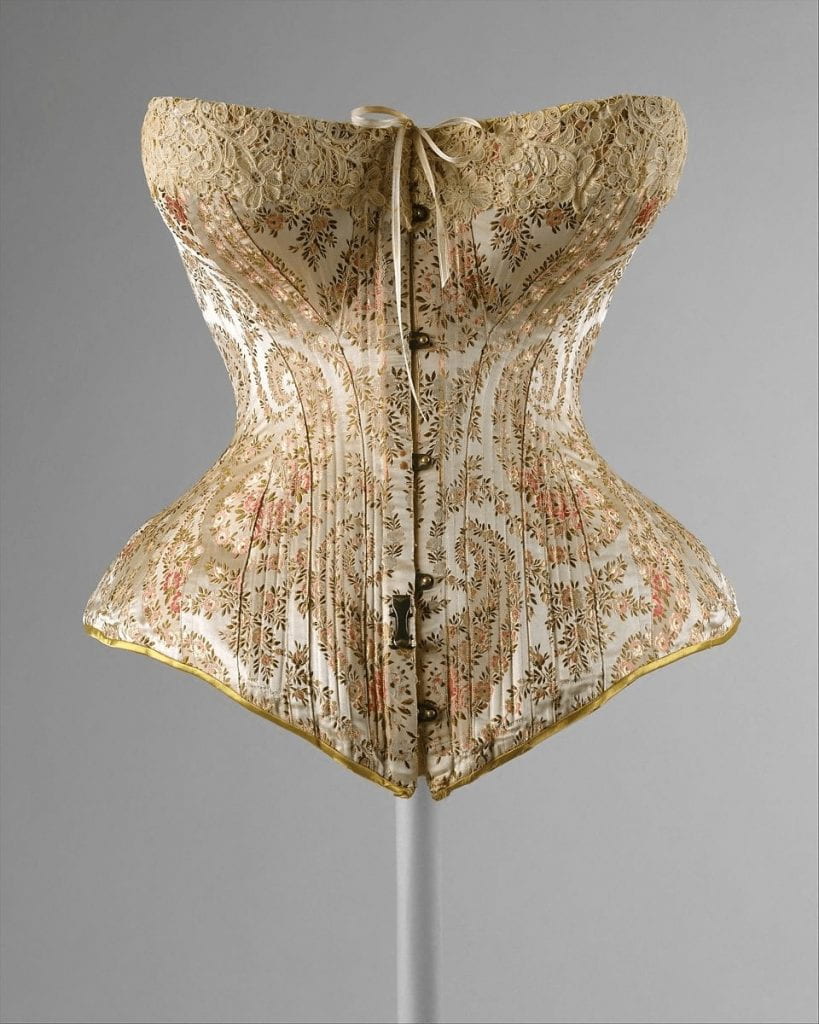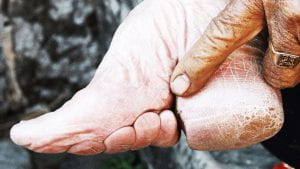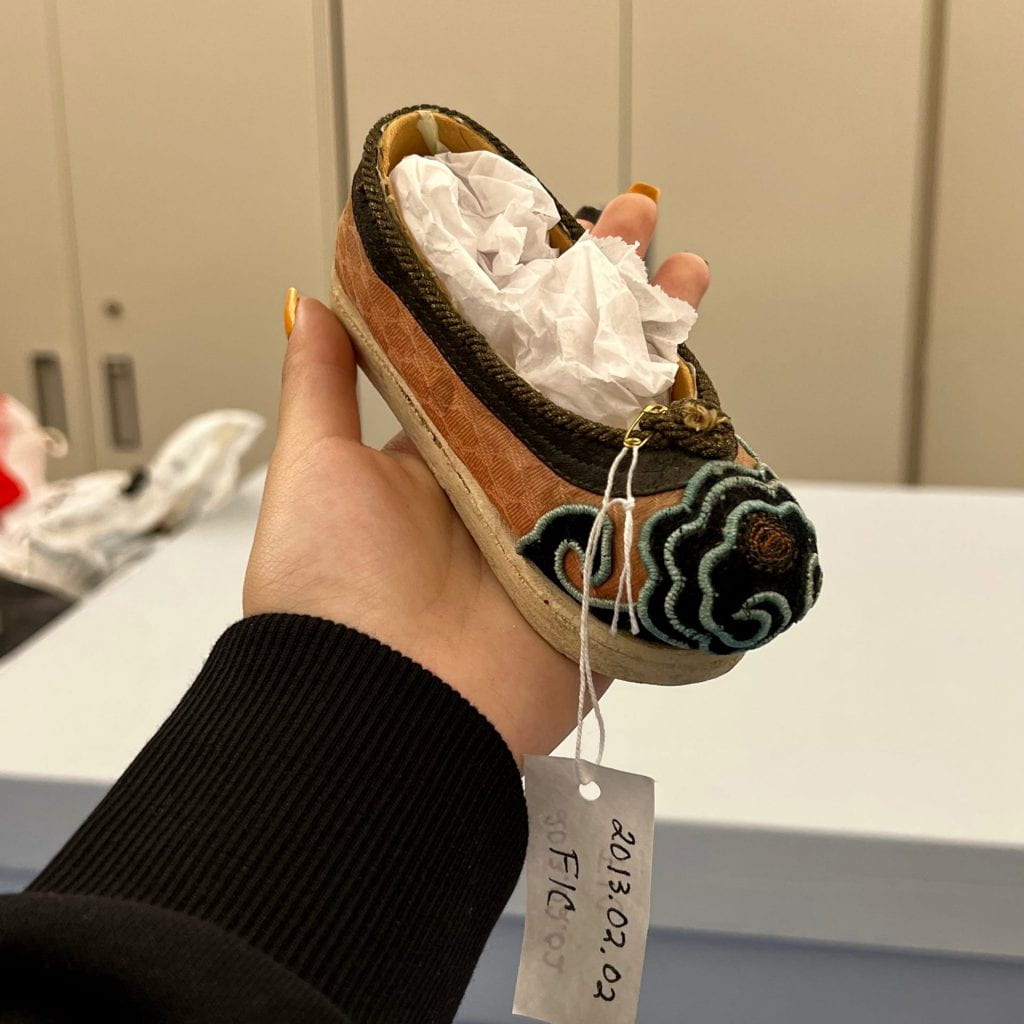This online blog post features materials protected by the Fair Use guidelines of Section 107 of the US Copyright Act. All rights reserved to the copyright owners.
Blog post by Irene Feng
Introduction and Background
“A pair of golden lotus, a jar of tears.” This was a widely known expression developed after the existence of foot binding in 10th Century China. Such customs are no longer practiced today. However, in the feudal society of ancient China, whether or not a woman’s feet were bound, and how well the feet were bound, directly affected her life. In the expression, “lotus” refers to the foot and “golden” refers to the desired level of foot size; for reference, a “golden lotus” would be around 9-12 centimeters – the size of an infant’s foot under one-year-old. Gold would be the finest, followed by silver (12-16cm), and metal (16cm+) lotus. One who did not bind their feet would be considered a disgrace.
Description & Why I Chose This Artifact
When I first examined the tiny shoe shown in Figure 1 (CF+TC Accession Number 2013.02.02), I thought it appeared to be children’s footwear. I learned it was actually a lotus shoe that would have been worn by a woman with bound feet. The shoe has a pink base color with a black band and golden cord around its opening. The toe of the shoe features light blue embroidery in cloud/floral motif combined with black velvet appliqué. The brown sole is painted white and is approximately 3/4 centimeter high. The overall length of the shoe is just 16 centimeters (6.25 inches) (see Figure 2). Compared to children’s footwear size today, it’s about the shoe size of a three or four-year-old. When evaluated according to the different lotus levels, it would be considered a silver lotus.
When I looked into Cornell Fashion + Textile Collection’s record on this lotus shoe, there was not any information about its donor or owner. Therefore, I conducted interviews with my Chinese friends and family. Since the practice was banned for its inhumane nature long before my birth, I didn’t realize how prevalently it was practiced. Essentially, every Chinese relative or friend whom I interviewed had female ancestors who were forced to bind their feet. The following anecdote comes from my great-grandmother’s foot binding experience recalled by my mother.
Shoulan Pei, my great-grandmother, was born in 1919. By that time, foot binding was already outlawed during the late Qing Dynasty (1902); however, this custom had been deeply rooted in the hearts of the people and persisted for a millennium. My great-grandmother lived in a rural REGION of China where foot-binging practices continued and did not truly end until the establishment of the People’s Republic of China in 1949.
My mother explained, “Grandma started binding her feet when she was six years old. She resisted when her mother bent her feet hard for the first time. She cried, tried to escape, and questioned her mother why. But eventually, she was forced back and had to accept the cruel practice that was repeatedly told to be for ‘her own good.’ I remember that Grandma’s feet were pointed like thin bamboo shoots (see Figure 3). Since the feet are barely ventilated, being wrapped tightly during day and night, it’s inevitable that it has rotten spots. Grandpa would soak Grandma’s feet in hot saltwater at night with a few peppers in the water to sterilize the feet; that’s the only time when the feet are loosened. Then, Grandma would get up at dawn, walk with unstable and careful steps, and cook for the family after fastening her ‘golden lotus.’”

Figure 3. Bound foot’s pointed big toe with the other four toes curled under the sole and its comparison with a normal foot. Preskar, Peter. The Disturbing Tradition of Foot Binding In China. History of Yesterday, https://historyofyesterday.com/foot-binding-in-china-10c676470d1
Process
In order to achieve a small foot size, the sole and toes would be broken by force between five to ten years old (see Figure 4). To soften the feet before the procedure, adults would soak the feet in warm herbal water or animal blood. The toenails were often peeled off to prevent in-growth. With the big toe pointed, the other four toes would be broken and curled under the sole of the foot. In order to achieve a desired arch and shape, the feet were often bound with hard objects like coins or stones. At last, the broken feet would be wrapped tightly with long bandages (around 3 meters). Although the feet were unbound and cleaned every few days, one out of ten girls died from the infection. Contrary to popular belief, the feet didn’t stop hurting when the girls became older. The pain and the binding became part of their lives (Preskar, 2021).
Reasons Behind Foot Binding
Why did foot binding persist for a thousand years and only get worse as the desired foot size got smaller and smaller? Did anyone fight back? In ancient times, China was greatly influenced by Confucianism. It was taught that the man of the family should be the provider while the wife must remain loyal and supportive. Men were always dominant and women were raised to obey their parents and husband unconditionally. Since women were not allowed to be schooled, the lack of knowledge and awareness of the outside world made them believe that being submissive was the right thing to do. The pain of walking with bound feet forced women to stay close to home, fulfilling the expectation of being a loyal wife according to Confucianism.

Figure 4. Comparison of the bone structure of a normal foot and a bound foot. Preskar, Peter. The Disturbing Tradition of Foot Binding In China. History of Yesterday, https://historyofyesterday.com/foot-binding-in-china-10c676470d1
It can be said that in ancient times, the small feet were women’s third sexual organs besides the genitals and breasts. Bound feet forced the woman to walk in a certain manner that would tighten the inner thigh and pelvic muscles. As a result, it was believed that the smaller the bound feet, the stronger the vaginal muscles would be during lovemaking (Preskar, 2021). Women who had trouble walking had to be carried all the time if she wished to travel, which gave the man a sense of control.
Moreover, women with tightly bound feet could not work, which suggested that they were raised in wealthier households or married to a wealthy husband who could afford his unoccupied wife (Preskar, 2021). This is similar to the earlier European concept of women with pale skin were considered prettier and raised in a higher social class since people in lower classes would have tanned skin from working outdoors.
For several dynasties in China, it was impossible to be granted a “good” marriage if the woman didn’t have small feet. And in ancient times, a woman who couldn’t marry was condemned for life. Therefore, the “golden lotus” was desired by both men and women. Even when the mothers and grandmothers went through the pain of foot binding, they would still choose to do it to their daughters.
Parallels Between Foot Binding and Tight Lacing – East and West

Figure 5. Image of a corset from 1891 collected by the Metropolitan Museum of Art. “Corset by Maison Léoty (1891).” The Metropolitan Museum of Art, New York City, https://www.metmuseum.org/art/collection/search/82433?searchField=All&sortBy=Relevance&deptids=8&ft=corset&offset=0&rpp=20&pos=1.
There are many ways for cultural standards to influence presentation of the body. In Chinese culture, small feet were a sexual fetish, a mark of beauty, a status symbol, and a way to a good marriage. Similar to foot binding in China, corsetry was a popular practice among the Victorian women (19th century) to achieve an alluring hourglass figure or S-curve silhouette (See Figure 5). Though men might not have explicitly forced women to wear corsets, women certainly wore them to impress men by “[shaping] their bodies from nature and toward a more civilized ideal form” (Killgrove, 2015). The practice involved pulling corsetry lacing as tight as possible for a dramatic waist reduction, often defined as four or more inches smaller than the natural waist. Organs like the stomach, kidney, liver, and heart were often compressed and dislocated, sometimes causing women to faint and preventing women from having children. It is therefore evident that both foot binding and corsetry were practices of deformity for aesthetic or sexual appeal.
Reflection Question
Historically, humans have modified their bodies from their natural state, including through foot binding and tight corsetry. More contemporary practices such as piercings and plastic surgeries are common today. After viewing Figure 6, I was struck by the similarity between the skeletal outline of the foot and the foot of a modern woman wearing high heels, which is also known for its discomfort but appealing aesthetics (see Figure 7). I then pose the question, “have we come as far as we think as we consider binding of the foot?

Figure 6. Image of a bound foot. Preskar, Peter. The Disturbing Tradition of Foot Binding In China. History of Yesterday, https://historyofyesterday.com/foot-binding-in-china-10c676470d1

Figure 7. Image of a foot in a high heel in modern time. “High Heels Anti-Drop Stickers.” Ali Express, https://www.aliexpress.com/item/1005003304757092.html
Works Cited
Beverley, Jackson. Splendid Slippers: A Thousand Years of an Erotic Tradition, 2nd ed., Ten
Speed Press, Berkeley, CA, 2000, p. 20.
“Corset by Maison Léoty (1891).” The Metropolitan Museum of Art, New York City,
https://www.metmuseum.org/art/collection/search/82433?searchField=All&sortBy=Relevance&deptids=8&ft=corset&offset=0&rpp=20&pos=1. Accessed 1 Dec. 2021.
“High Heels Anti-Drop Stickers.” Ali Express,
https://www.aliexpress.com/item/1005003304757092.html.
Killgrove, Kristina. Here’s How Corsets Deformed The Skeletons of Victorian Women. Forbes, 16 Nov. 2015, https://www.forbes.com/sites/kristinakillgrove/2015/11/16/how-corsets-deformed-the-skeletons-of-victorian-women/?sh=187799c1799c.
“Object: Tight Lacing, or Fashion before Ease.” The British Museum, Bowles & Carver,
London, England, 1777, https://www.britishmuseum.org/collection/object/P_1935-0522-1-227.
Preskar, Peter. (2021). The Disturbing Tradition of Foot Binding In China. History of Yesterday, 3n.d.,
https://historyofyesterday.com/foot-binding-in-china-10c676470d1
“Shoe, for Bound Foot, Pink with Black Velvet Toe: 2013.02.002.” Cornell Fashion + Textile
Collection, https://cornellfashion.pastperfectonline.com/webobject/9DB3F481-AA4F-49F6-897E-217361486970. Accessed 3 Dec. 2021.



